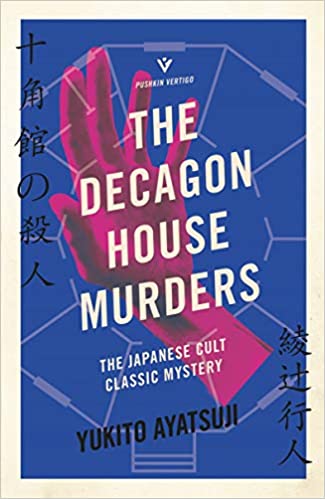A Pale View of the Hills, Kazuo Ishiguro’s first novel, is restrained and delicate and at first seems relatively straightforward. But towards the end, ambiguity sets in, forcing the reader to think back through the events of the novel. I read it for Novellas in November.
Etsuko is a Japanese woman, a widow living in England whose eldest daughter, Keiko, has recently committed suicide. Her younger daughter, Niki, is visiting from London, and a child they see on a walk together reminds Etsuko of her life in Nagasaki just after World War II. Particularly, she is reminded of her friendship with a woman named Sachiko.
Nagasaki is recovering from the bombing. Etsuko is married to Jiro only a short time, and she is pregnant. The other women in her apartment building talk about Sachiko and say she is unfriendly. She lives with her daughter Mariko in the only house left in the area, a rundown cottage.
Etsuko meets Sachiko when she expresses worry about Sachiko’s young daughter, who seems to be left alone quite often. Sachiko talks as if her daughter is the most important thing in her life, but she doesn’t worry when she is out late, and Mariko is a very strange girl. Also, we eventually learn that Sachiko has an American lover, Frank, who keeps promising to take them to America but then abandons them and drinks up all their savings.
For her part, Etsuko behaves like a dutiful housewife and entertains Jiro’s visiting father, whom she likes very much. But in the present time we understand that she left Jiro to move to England with Niki’s father.
The plot of the novel centers on Sachiko’s choice—whether to return to live with her rich uncle and cousin, who welcome her, to live the life of a traditional widow, or to go off with Frank. The girl Mariko detests Frank, by the way, and she is also concerned about the fate of some kittens.
There is a moment late in the book that made me doubt that I fully understood what was going on, and this ambiguity is not resolved. As a narrator, Etsuko is not altogether reliable, but whether this moment is a slip of self-identification or of something more sinister, readers have to decide for themselves. Certainly, by then the story has taken on a darker tinge.
Some readers may not care for this ambiguity and others, I understand, have come up with some far-fetched theories, but along with its elegiac pure prose, it is this moment that turns the novel into one you will remember and think about.












